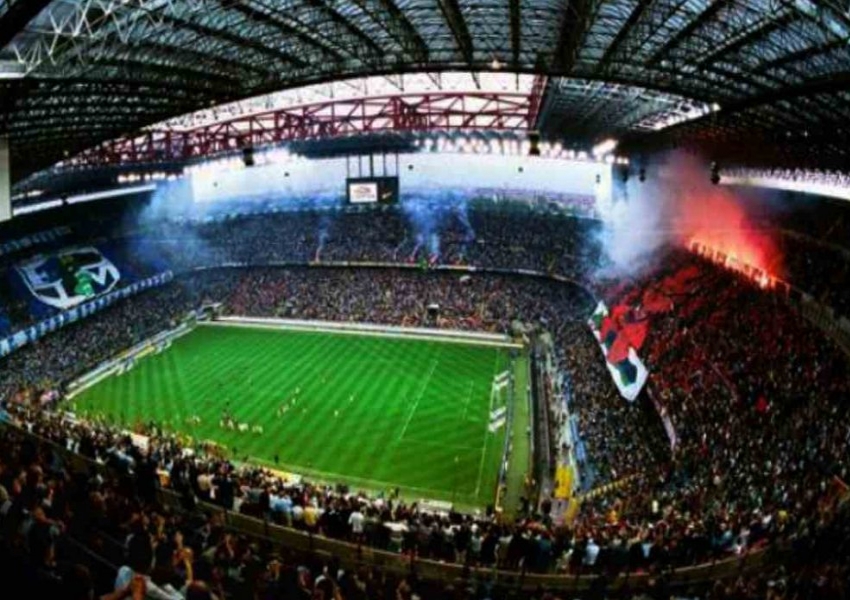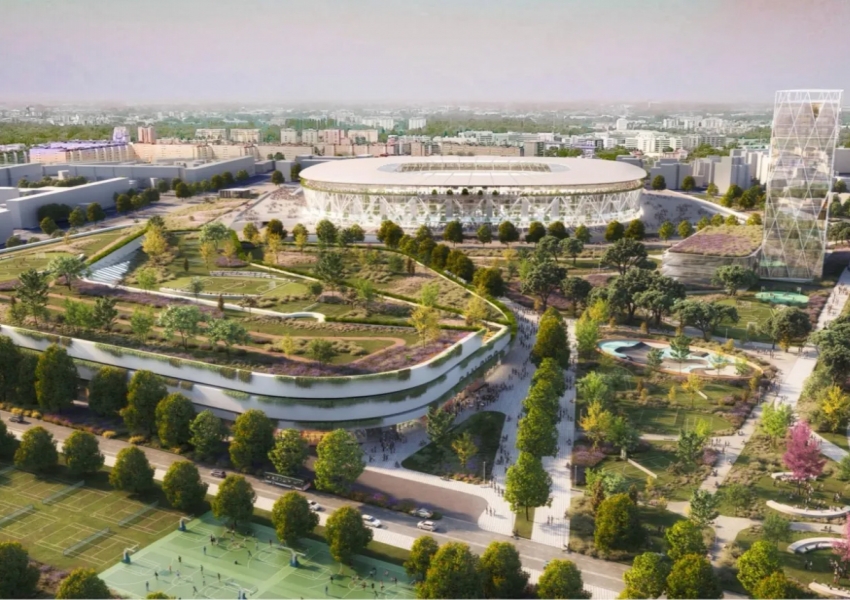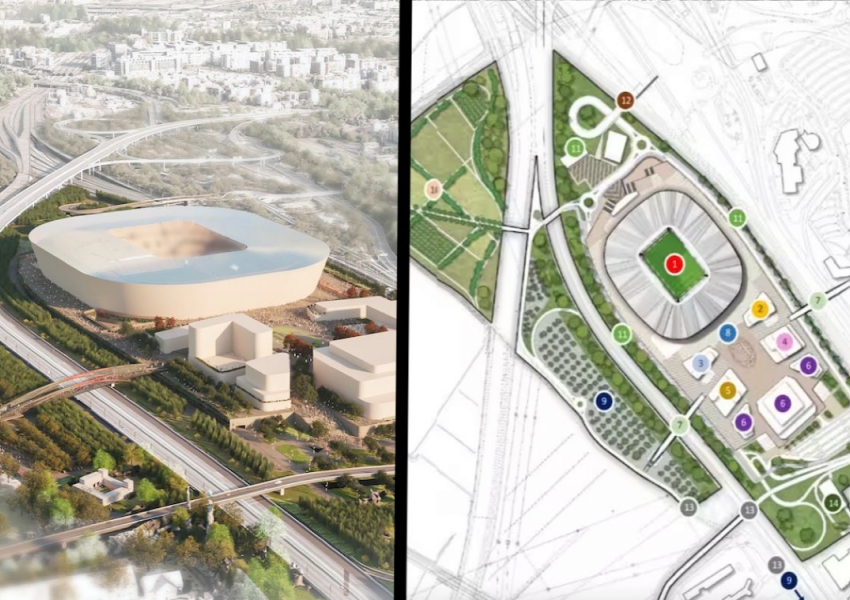Milan's Giants Rank in Europe’s Top Five for Attendance but Lag Behind in Revenue: A Five-Year Struggle for a New Stadium
AC Milan and Inter Milan are two of the most iconic football clubs in the world, steeped in history and rivalry. Both teams boast passionate fanbases, and their home, the historic San Siro stadium, consistently attracts some of the highest attendance numbers across Europe. Despite their impressive matchday crowds, Milan's two football giants have seen their stadium-related revenues lag far behind their European counterparts. A significant gap exists between their attendance figures and their earnings, leading to a prolonged and complex journey in the pursuit of a new stadium.

Attendance Numbers Among Europe's Elite
Inter Milan and AC Milan have no trouble drawing crowds to San Siro. Last season, Inter’s average attendance reached a staggering 72,838, with a 91% occupancy rate, totaling 1.38 million fans for the season. This put them second in Europe, trailing only Manchester United, whose 1.39 million fans topped the continent. AC Milan also achieved impressive numbers, averaging 69,461 attendees per match, an 87% occupancy rate, which brought their total attendance to 1.31 million, placing them fifth in Europe. Clearly, the passion for football in Milan remains as vibrant as ever.

However, when it comes to stadium-related revenue, both clubs fall significantly behind the continent's financial powerhouses. According to Deloitte, AC Milan earned approximately €80 million in matchday revenue last season, while Inter fared slightly better, but not by much. In comparison, Barcelona raked in €165 million, while teams like Paris Saint-Germain, Manchester United, Tottenham Hotspur, Real Madrid, Bayern Munich, and Arsenal all generated upwards of €150 million from their stadium operations.

The Financial Burden of Renting San Siro
A key reason for this disparity lies in the fact that neither Milan club owns the San Siro. Both teams rent the stadium from the city of Milan, paying a combined minimum rent of €8.5 million annually, alongside hefty maintenance costs. These expenses eat into their already modest ticket revenue, creating a significant disadvantage compared to clubs like Juventus, Real Madrid, and Bayern Munich, which own their venues and can generate income through naming rights and other stadium-related ventures.
The stadium itself is also a major factor in the clubs' inability to increase revenues. San Siro, while beloved for its historic significance, is an aging facility that lacks the modern amenities required to attract higher-paying attendees. The stadium’s infrastructure is outdated, and while hardcore fans might be willing to tolerate its poor conditions, issues like insufficient bathrooms, safety concerns, and inadequate hospitality options deter wealthier patrons who would otherwise be willing to pay a premium for a better experience.
These conditions make it difficult for both clubs to increase ticket prices, further limiting their ability to boost revenue. In contrast, top European clubs with modern stadiums can offer luxury seating, VIP boxes, and premium experiences that significantly increase matchday income.
A Lack of Autonomy
Another critical factor that hampers Milan’s two giants is their lack of operational control over the stadium. As mere tenants of San Siro, they cannot leverage the stadium for additional revenue streams, such as naming rights or commercial partnerships tied to the venue. Even though San Siro hosts numerous concerts and events during the offseason, neither AC Milan nor Inter see any of the profits. To add insult to injury, they are often responsible for covering the costs of repairing the pitch after these events damage the playing surface.
By contrast, clubs like Juventus and Real Madrid have reaped significant financial rewards from owning their stadiums. Juventus, for example, secured a €120 million naming rights deal over five years for the Allianz Stadium, while Real Madrid brings in over €100 million annually through surrounding facilities, events, and leasing activities at the Santiago Bernabeu. This kind of revenue generation is simply not possible for Milan’s clubs, as they remain tethered to an aging stadium they do not own.
The Long Road to a New Stadium
Both AC Milan and Inter Milan have long recognized the need for a new stadium to close the revenue gap with Europe’s elite. However, the journey towards realizing this dream has been fraught with obstacles. In fact, after five years of delays, the clubs find themselves back at square one, with little progress made since their initial plans were unveiled.
In recent months, two interconnected stories dominated Italian social media. On one hand, fans were excited to learn that Milan’s attendance figures ranked among the top five in Europe, a testament to the clubs’ enduring popularity. On the other hand, disappointment set in as it became clear that their stadium-related revenues were among the worst for Europe’s top teams.
The frustration among supporters and pundits alike is palpable. The Milanese clubs' ambitious project for a new stadium, first proposed in 2019, has faced endless delays and bureaucratic hurdles. The latest setback came when Milan’s mayor, Beppe Sala, confirmed that both clubs had rejected a proposal from construction giant WeBuild to renovate San Siro. The plan, initially budgeted at €300-350 million, involved a three-year renovation period, during which games would still be played at the stadium while work progressed. However, the clubs balked at the proposal for several reasons.
WeBuild’s Proposal: A Deal Too Lopsided
WeBuild’s proposal, while seemingly a step forward, was riddled with issues. First, the renovation’s initial budget seemed unrealistic. In recent years, major construction projects across Europe, including the revamping of the Santiago Bernabeu, have regularly exceeded their original budgets, sometimes by double. Many experts believe that WeBuild’s estimate for the San Siro renovation would likely balloon well beyond the €300-350 million range.
The construction timeline was also problematic. The plan called for a three-year renovation period during which both clubs would continue to play at the stadium, leading to potential logistical nightmares and further disruptions for fans. More importantly, though, the financial terms of the deal were lopsided. WeBuild proposed that AC Milan and Inter cover the majority of the renovation costs, yet after the project was completed, the clubs would still lack operational control over the stadium. They would remain tenants, albeit with a 99-year lease and a modest discount on rent.
It’s little wonder, then, that both clubs rejected the proposal. Agreeing to such a deal would have left them saddled with massive renovation costs while still being unable to fully capitalize on their stadium’s revenue potential. As some Italian pundits wryly noted, accepting the WeBuild offer would have made Milan’s two giants “suckers.”
Back to Square One
After rejecting WeBuild’s proposal, Milan’s mayor, Beppe Sala, floated a new idea: build a new stadium next to the existing San Siro. The suggestion mirrors the clubs’ original 2019 plan, which envisioned constructing a modern venue beside the old stadium. However, progress has been slow, and despite the fanfare surrounding the idea, little has changed over the past five years. The bureaucratic delays that have plagued the project from the beginning continue to persist, leading many to wonder when, if ever, the clubs will finally have their new home.
This endless cycle of delays and indecision has left fans and commentators frustrated. Barbara Berlusconi, a former AC Milan executive, and leading football finance commentators like Marco Bellinazzo have publicly criticized the process, calling it a waste of precious time. Calcio Finanza echoed these sentiments, suggesting that the city’s endless bureaucratic red tape has cost both clubs five valuable years in their quest for a new stadium.
A Glimmer of Hope?
Despite the setbacks, there are some reasons for optimism. In recent months, both clubs have shown greater cooperation in their efforts to secure a new stadium, thanks in large part to changes in ownership. Since Oak Tree Capital’s involvement, Inter and AC Milan have been working more closely on stadium-related matters, strengthening their joint approach. The two clubs now share the same vision for a modern, revenue-generating venue, which is crucial for their long-term success.
Last month, AC Milan’s ownership group even invited Inter to join them in building a new stadium in the San Donato area, with costs split evenly and both clubs sharing future revenues equally. Although Inter rejected the proposal due to concerns about the location, the gesture demonstrated the willingness of both clubs to collaborate on a shared future.
While the path forward remains uncertain, the increased cooperation between the two clubs is a positive development. Both AC Milan and Inter are painfully aware of the fact that they have been stuck in limbo for five years, victims of a system that has stifled their ambitions. Yet, with a renewed sense of purpose and cooperation, they may finally be able to overcome the obstacles that have held them back.
Ultimately, the clock is ticking. For Milan’s two giants to reclaim their place among Europe’s financial elite, they must resolve their stadium dilemma.
Copyright Statement:
Author: mrfootballer
Source: Mrfootballer
The copyright of this article belongs to the author. Reproduction is not allowed without permission.
Recommended Blog
- Inter Milan Reaps Success but May Have a Surprise in Store: New Signing Palacios Set to Follow Bisseck’s Path
- Juventus' Injury Crisis and Emergency Plan Show the Way for Inter: New FIGC Ruling a Golden Opportunity
- AFC World Cup Qualifiers: Australia Finally Welcomes the Rain, Saudi Arabia and Japan Clash Over 3-Back Formations
- UEFA Champions League Round 2: Real Madrid Must Learn to Defend the Lead, Liverpool's Curious Struggles Against Italian Sides
- Two Legendary Traits Reborn in Taremi: The Three Wings He Adds to Inter Milan
- Inter Milan Reports €36 Million Deficit for Last Season: Detailed Breakdown of New Ownership’s €47 Million Capital Injection
- Europa League Round 1: Manchester United Boss Seeks Respite, Hoffenheim Eyes Bundesliga Standings
- Inter’s Season Strategy Unchanged: Champions League Above All Else – Insights from Two Internal Meetings
- Inter Milan’s Plan Against Manchester City: Three Super-Sub Tactics to Lead Serie A’s English Resistance
- Champions League Opening Round: AC Milan's Timely Comeback, Real Madrid Rely on Ancelotti’s Steady Hand
Hot Blog
- Man City’s 21-Year-Old Star Returns Home as a Hero! Receives $350,000 Mercedes, Gifts It to His Father
- AFC Champions League Quarterfinal Draw: Yokohama Faces CR7! Two High-Stakes Clashes as Japan’s Duo Battle in the Bottom Half
- 175 Days on the Sidelines! Barça’s 32-Year-Old Guardian Dreams of a Champions League Comeback
- English Media: Manchester United Will Win Premier League Title in 2028! History Will Repeat Itself, Two Teams Serve as Inspirations
- 4 AM Showdown: Barcelona's Revenge Match! Win = 3-Point Lead Over Real Madrid, Key Players Rested
- 0-2 Double Defeat! China National Team Stuck at 6 Points: No More Direct World Cup Hopes, Two Crucial Matches Ahead
- China National Football Team Drops 13.6 Points, Slips to 94th in FIFA Rankings: Syria Overtakes, New 9-Year Low
- 0-0 Draw! Japan 12 Shots, 2 Missed One-on-Ones: 8 Matches, 20 Points, Group Winner, Saudi Arabia Stuck at 10 Points in 3rd
- 4-1, Double Win Over Brazil! Argentina Celebrates: World Cup Qualification Secured, 4th Team Globally to Qualify
- Real Madrid Got Lazy: 7 Kilometers Less Running in UCL! Two Superstar Spectators While Barça Outruns Them All